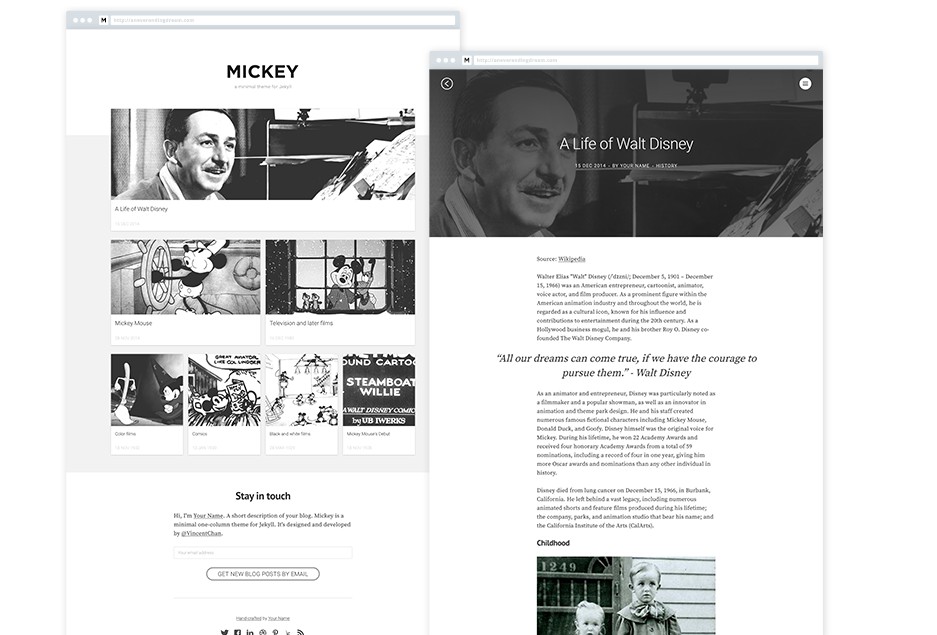jekyll-dash
A dark theme for Jekyll, inspired by Dash UI for Atom.

This theme for Jekyll has been inspired by dash-ui, a dark theme for Atom.
Installation
Add this line to your Jekyll site’s Gemfile:
gem "jekyll-dash"
And add this line to your Jekyll site’s _config.yml:
theme: jekyll-dash
And then execute:
$ bundle
Or install it yourself as:
$ gem install jekyll-dash
Configuration
Add the following configuration to your site. Customise it to your needs!
# required by disqus to display comments
url: https://your-site-url
# jekyll-paginate
paginate: 5
paginate_path: "/blog/page:num/"
# jekyll-tagging (optional)
tag_permalink_style: pretty
tag_page_layout: tag_page
tag_page_dir: tag
dash:
date_format: "%b %-d, %Y"
disqus:
shortname: <your-discuss-shortname>
# generate social links in footer
# supported colors: green, red, orange, blue, cyan, pink, teal, yellow, indigo, purple
social_links:
- url: https://twitter.com/bitbrain_
icon: twitter-square
color: cyan
- url: https://bitbrain.itch.io
icon: itch-io
color: red
- url: https://github.com/bitbrain
icon: github-square
color: purple
Additional Features
Tagging add the jekyll/tagging plugin to your _config.yml file to enable tagging. Do not forget to also add the following to your Gemfile:
gem "jekyll-tagging"
Gravatar if you want to display your gravatar picture, add the liquid-md5 to your _config.yml file. Do not forget to also add the following to your Gemfile:
gem "liquid-md5"
**
Contributing
Bug reports and pull requests are welcome on GitHub at https://github.com/bitbrain/jekyll-dash. This project is intended to be a safe, welcoming space for collaboration, and contributors are expected to adhere to the Contributor Covenant code of conduct.
Development
To set up your environment to develop this theme, run bundle install.
Your theme is setup just like a normal Jekyll site! To test your theme, run bundle exec jekyll serve and open your browser at http://localhost:4000. This starts a Jekyll server using your theme. Add pages, documents, data, etc. like normal to test your theme’s contents. As you make modifications to your theme and to your content, your site will regenerate and you should see the changes in the browser after a refresh, just like normal.
When your theme is released, only the files in _layouts, _includes, _sass and assets tracked with Git will be bundled.
To add a custom directory to your theme-gem, please edit the regexp in jekyll-dash.gemspec accordingly.
Looking for Support or Custom Solutions?
We specialize in creating stunning, fully-customized Jekyll websites tailored to your needs.
If you need assistance with setup, customization, or support, don't hesitate to contact us.
CONTACT US
